 On November 19, dozens of Cub Scouts and STEM Scouts found their way to George Mason University’s Fairfax Campus, where the Department of Atmospheric, Oceanic and Earth Sciences’ Geology group hosted interactive workshops.
On November 19, dozens of Cub Scouts and STEM Scouts found their way to George Mason University’s Fairfax Campus, where the Department of Atmospheric, Oceanic and Earth Sciences’ Geology group hosted interactive workshops.
The activities included learning how to identify different rocks and minerals, learning how to read topographic and geologic maps, creating mineral hardness tests, recognizing geologic materials around the house, and discussing the wide range of activities that can be part of a geologist’s work day.
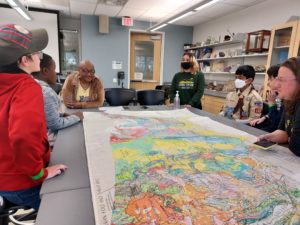 Webelos earned the “Earth Rocks” adventure by attending the workshop, and all Cubs earned some requirements towards their Nova: Down and Dirty STEM Award!
Webelos earned the “Earth Rocks” adventure by attending the workshop, and all Cubs earned some requirements towards their Nova: Down and Dirty STEM Award!
Best of all, the scouts benefitted from the incredible instruction directly from GMU’s AOES faculty, graduate students and undergraduate students. This event was designed by Dr. Julia Nord in 2014 who designed the program with Northern Virginia Mineral Club’s then president Jim Kostka and NCAC Powhatan District’s then STEM Coordinator Tony Petruzzi. After a hiatus in 2020 and 2021 due to covid protocols on campus, we are delighted that GMU welcomed our scouts again for this always popular opportunity! We are thankful to Dr. Julia Nord and Dr. Jules Goldspiel for their leadership in reviving this excellent program, as well as to all the students in GMU’s STEM accelerator who supported the activities.
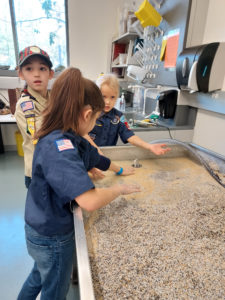
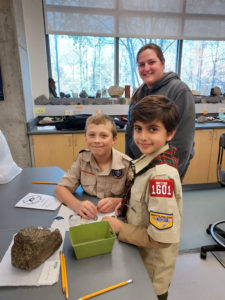
After the Geology activities, the scouts were able to visit the Gem and Mineral show on the GMU campus. The show is co-sponsored by the Northern Virginia Mineral Club, and the timing of the show is coordinated with the Scouting event to help make a full day of geology centered activities. The show was also open to all GMU students and the public, and it was by all reports a fun and successful event for the students, community, vendors and the Friends of Mineralogy Virginia Chapter.
 To learn more about the scouting Nova Awards: www.scouting.org/STEM
To learn more about the scouting Nova Awards: www.scouting.org/STEM
To learn more about upcoming NCAC STEM events: www.ncacbsa.org/STEM
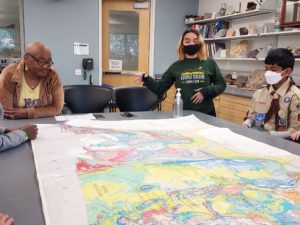

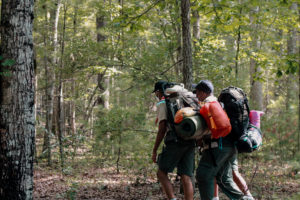
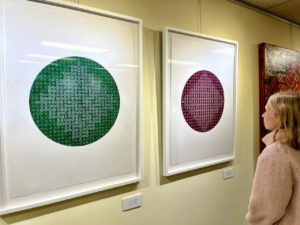 If you were to look up the meaning of Symmetry, you would find definitions that relate to mathematics, physics, and art. The
If you were to look up the meaning of Symmetry, you would find definitions that relate to mathematics, physics, and art. The 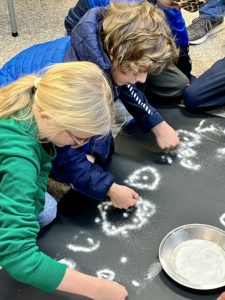 Cub Scouts learned about the history and cultural significance of the Kolam and explored the many forms of symmetry found within them. While learning to draw different Kolam, they also gained a better understanding on the concept of fractals. Aishwariya demonstrated the traditional way Kolam are created using rice flour and sand and had the Cub Scouts do their best at creating their own. Following the workshop, Cub Scouts viewed Aishwariya’s art collection called Thalaimuraigal, Three Generations of Kolam, displayed within the Gandhi Memorial Center. The collection showcases Kolam created by Aishwariya’s grandmother, mother, and herself.
Cub Scouts learned about the history and cultural significance of the Kolam and explored the many forms of symmetry found within them. While learning to draw different Kolam, they also gained a better understanding on the concept of fractals. Aishwariya demonstrated the traditional way Kolam are created using rice flour and sand and had the Cub Scouts do their best at creating their own. Following the workshop, Cub Scouts viewed Aishwariya’s art collection called Thalaimuraigal, Three Generations of Kolam, displayed within the Gandhi Memorial Center. The collection showcases Kolam created by Aishwariya’s grandmother, mother, and herself. Shanthi describes Kolam as, “a versatile tool for her to explore topics she is curious about, such as cosmology, neuroscience, and math.” The connection between the art form and STEM concepts is especially clear at her art installation, Singularities and Infinities, displayed at the Katzan Art Center at American University. Pack 278 Cub Scouts ventured to the Katzan Art Center following the workshop to continue their investigation into the parallels between Art and Science.
Shanthi describes Kolam as, “a versatile tool for her to explore topics she is curious about, such as cosmology, neuroscience, and math.” The connection between the art form and STEM concepts is especially clear at her art installation, Singularities and Infinities, displayed at the Katzan Art Center at American University. Pack 278 Cub Scouts ventured to the Katzan Art Center following the workshop to continue their investigation into the parallels between Art and Science. Experimental Particle Physicist, Michael Albrow, combined prose and poetry with Shanthi’s artwork to explore and express concepts of the cosmos. Found within the Artists’ Statement, the following best explains the goal of the Fearful Symmetry NOVA; “While artists and scientists view the universe through different disciplinary lenses, there is much in common – a sense of wonder and beauty, a fascination with the unknown, the boundaries of our knowledge, the perfect symmetries and broken symmetries.” Pack 278 Cub Scouts, parents, and leaders left the day with a better understanding of how symmetry can be found within their everyday life.
Experimental Particle Physicist, Michael Albrow, combined prose and poetry with Shanthi’s artwork to explore and express concepts of the cosmos. Found within the Artists’ Statement, the following best explains the goal of the Fearful Symmetry NOVA; “While artists and scientists view the universe through different disciplinary lenses, there is much in common – a sense of wonder and beauty, a fascination with the unknown, the boundaries of our knowledge, the perfect symmetries and broken symmetries.” Pack 278 Cub Scouts, parents, and leaders left the day with a better understanding of how symmetry can be found within their everyday life.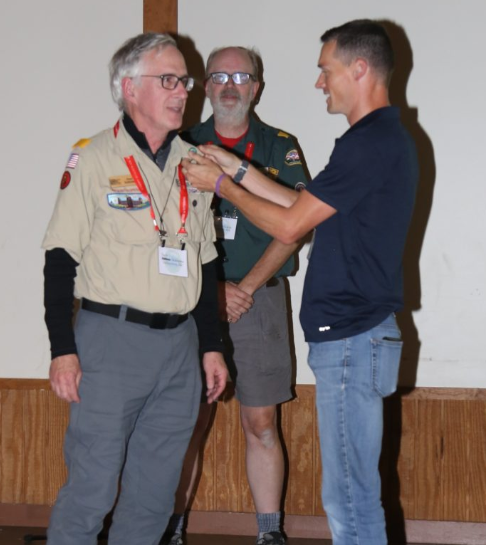

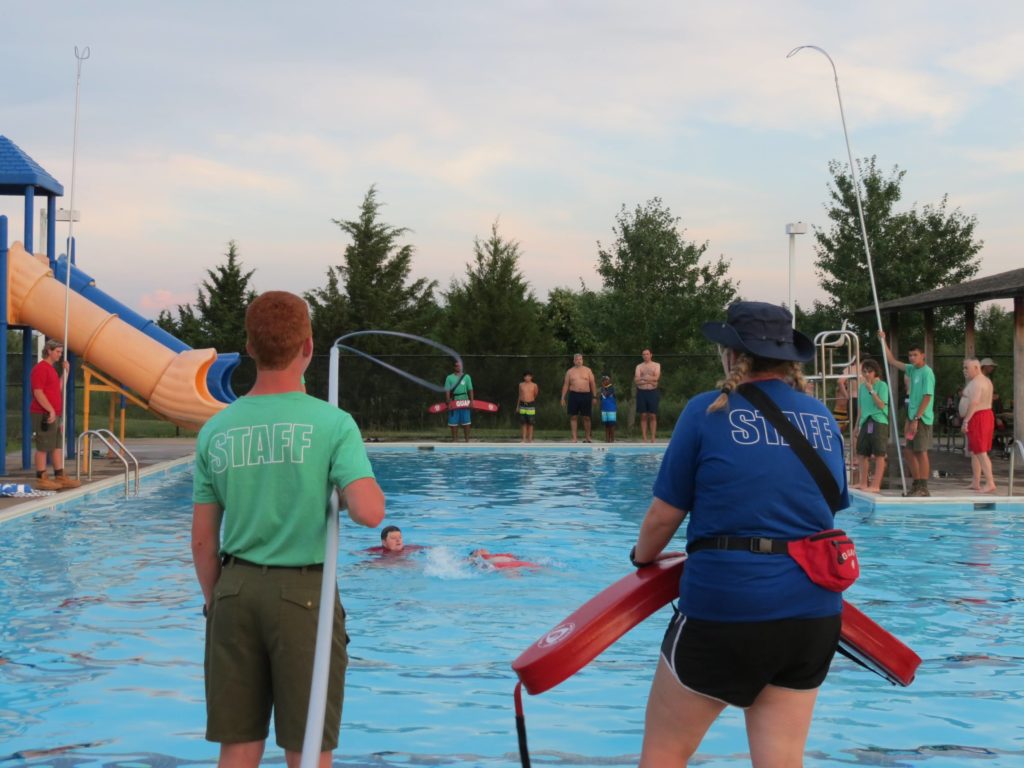


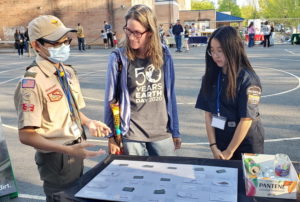 Great Falls National Park (VA) has been a popular tourist destination even before COVID-19 for its rich history – home to one of the nation’s first canals, the scenic view of the Great Falls of the Potomac, as well as hiking trails along Potomac River. After the COVID-19 lockdown in 2020 and the local government’s encouragement of the using of parks and outdoor recreation to mitigate mental health issues, Great Falls National Park again became a hot destination for families in the Washington DC area.
Great Falls National Park (VA) has been a popular tourist destination even before COVID-19 for its rich history – home to one of the nation’s first canals, the scenic view of the Great Falls of the Potomac, as well as hiking trails along Potomac River. After the COVID-19 lockdown in 2020 and the local government’s encouragement of the using of parks and outdoor recreation to mitigate mental health issues, Great Falls National Park again became a hot destination for families in the Washington DC area.
 To allow for a comparison, I also participated and collected trash weight data from three sessions (March 20th, March 27th and April 10th) of the litter pick up project that BSA Troop 55 scouts completed at Great Falls National Park (VA). The trash weight data allowed me to establish the baseline data for my “pre-LNT” education sessions. The first step is to collect three rounds of trash, calculate the weight of the trash. Then, set up a “Leave No Trace” education/exhibition table at the picnic areas later at the park and educate visitors on the “Leave No Trace” principals for 2-3 hours. After the exhibition, the Troop 55 scouts collected trash again to see any difference in terms of weight of the trash to analyze the impact of “Leave No Trace”. My plan was to conduct 2-3 “Leave No Trace” education sessions at the picnic area to collect enough comparison data.
To allow for a comparison, I also participated and collected trash weight data from three sessions (March 20th, March 27th and April 10th) of the litter pick up project that BSA Troop 55 scouts completed at Great Falls National Park (VA). The trash weight data allowed me to establish the baseline data for my “pre-LNT” education sessions. The first step is to collect three rounds of trash, calculate the weight of the trash. Then, set up a “Leave No Trace” education/exhibition table at the picnic areas later at the park and educate visitors on the “Leave No Trace” principals for 2-3 hours. After the exhibition, the Troop 55 scouts collected trash again to see any difference in terms of weight of the trash to analyze the impact of “Leave No Trace”. My plan was to conduct 2-3 “Leave No Trace” education sessions at the picnic area to collect enough comparison data. What I learned from the research on the Leave No Trace education:
What I learned from the research on the Leave No Trace education: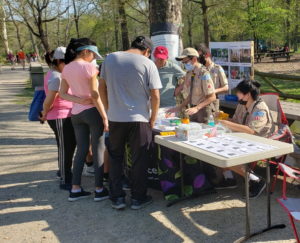 In June 2022, I graduated from the Virginia Youth Conservation Leadership Institute (YCLI) and gave my presentation to the board of the Virginia Youth Conservation Leadership Institute (YCLI) and received my certificate via mail from Ms. Maura Christian, the YCLI Coordinator, Education & Training Coordinator-Virginia Association of Soil & Water Conservation Districts. In addition, Dr. Sara Holtz and Ms. Ashley Palmer, the Conservation Education Specialist, Northern Virginia Soil & Water Conservation District, referred me to publish my presentation at the 2022 Virtual Student Environmental Action Showcase (SEAS). For details of my YCLI project presentation, you can check it out at this web link: https://seas.live/2022-seas/student-projects/
In June 2022, I graduated from the Virginia Youth Conservation Leadership Institute (YCLI) and gave my presentation to the board of the Virginia Youth Conservation Leadership Institute (YCLI) and received my certificate via mail from Ms. Maura Christian, the YCLI Coordinator, Education & Training Coordinator-Virginia Association of Soil & Water Conservation Districts. In addition, Dr. Sara Holtz and Ms. Ashley Palmer, the Conservation Education Specialist, Northern Virginia Soil & Water Conservation District, referred me to publish my presentation at the 2022 Virtual Student Environmental Action Showcase (SEAS). For details of my YCLI project presentation, you can check it out at this web link: https://seas.live/2022-seas/student-projects/